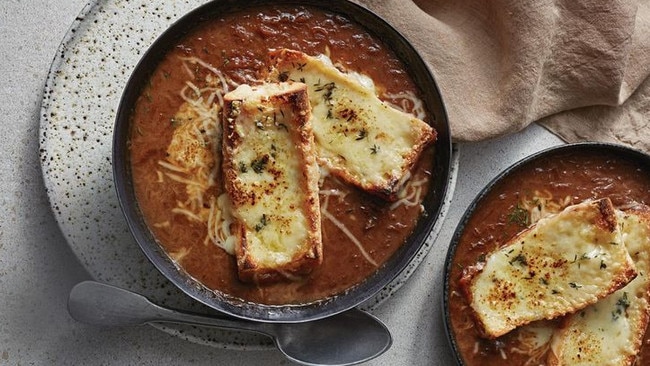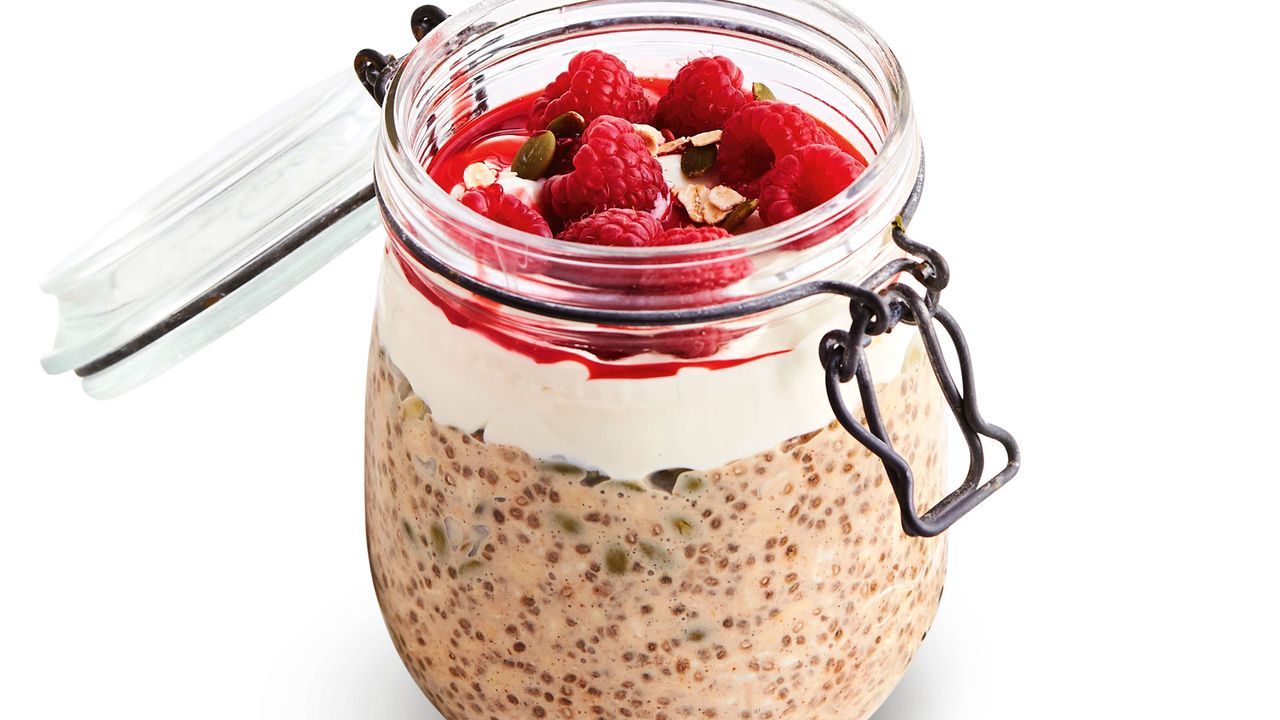Matt Preston on why classic comfort food is making a comeback
There’s a reason why we see old food favourites like French onion soup return time and again — and it’s not only about the flavour.
I’m a pretty obvious person. When I think comfort food I think of hearty stews, casseroles with buttery mash or a rich self-saucing chocolate pudding.
In Italy, it could be a bowl of polenta with ragu; in Greece a slab of yiayia’s moussaka. Predictable? Maybe. Familiar? Definitely.
For me, what makes for great comfort food is that it’s warming emotionally as well as physically.
So while laksa, congee or khichdi (a South Asian rice and lentil dish) do it for me on the physically warming front, my emotional connection is lessened, as these were things I only discovered later in life.
In my experience, the emotional side of a dish’s comforting nature is often linked to those times when you felt secure and loved as a kid; food that triggers all those warm ‘feels’.

Perhaps this is why chicken soup has such a powerful pull in so many cultures, whether it’s made with egg and lemon like Greek avgolemono, or with matzah balls as in so many Jewish homes around the world.
Its culinary connection may well be with sickness, but it’s the unconditional loving care that came with the soup that makes its memory so powerful.

This perhaps answers a question that’s been bugging me: why have so many retro dishes and ingredients made such a comeback in recent times?
Those once daggy two-minute noodles of your youth have been given back their original name of instant ramen, and are now suddenly hip again.
Meanwhile, French onion soup mix is everywhere in a way that it hasn’t been since the late ‘70s.
The answer seems to be that all these flavours bring us a sense of reassurance from a better past; that same reassurance that’s intrinsically linked to all comfort food.
Stepping up an old favourite recipe with the same flavours but in a different form makes the experience even better. It also minimises the risk of the regret when you find that your rose-tinted memory of the original doesn’t taste quite as sweet today.
And let’s face it – over the last few years, we’ve needed a lot of reassurance, plus we’ve had a fair bit of time up our sleeves to spend on experimenting in the kitchen.
Of course, the best thing to know about French onion soup mix is that French onion soup made without it tastes even better. And while the real deal is a little time-consuming, it’s extremely easy to make … if you have a little patience.
Onion soup had been the cheap, warming soup of the poorest French peasantry for 700 years before the melty, cheesy toasts were added at restaurants like Au Pied de Cochon and La Poule au Pot around Paris’ sprawling Les Halles Market.
Gratinating the soup like this ensured it became such a hit that, when it was sold in the early hours, burly market porters would eat it for breakfast side-by-side with evening-dressed toffs on the way home from the nightclubs, looking for a hangover cure.
It’s also pretty good in front of the telly on a wet and windy Tuesday night.
Make Matt’s traditional French onion soup recipe here.
For more food, travel and lifestyle news, go to delicious.com.au
Originally published as Matt Preston on why classic comfort food is making a comeback



